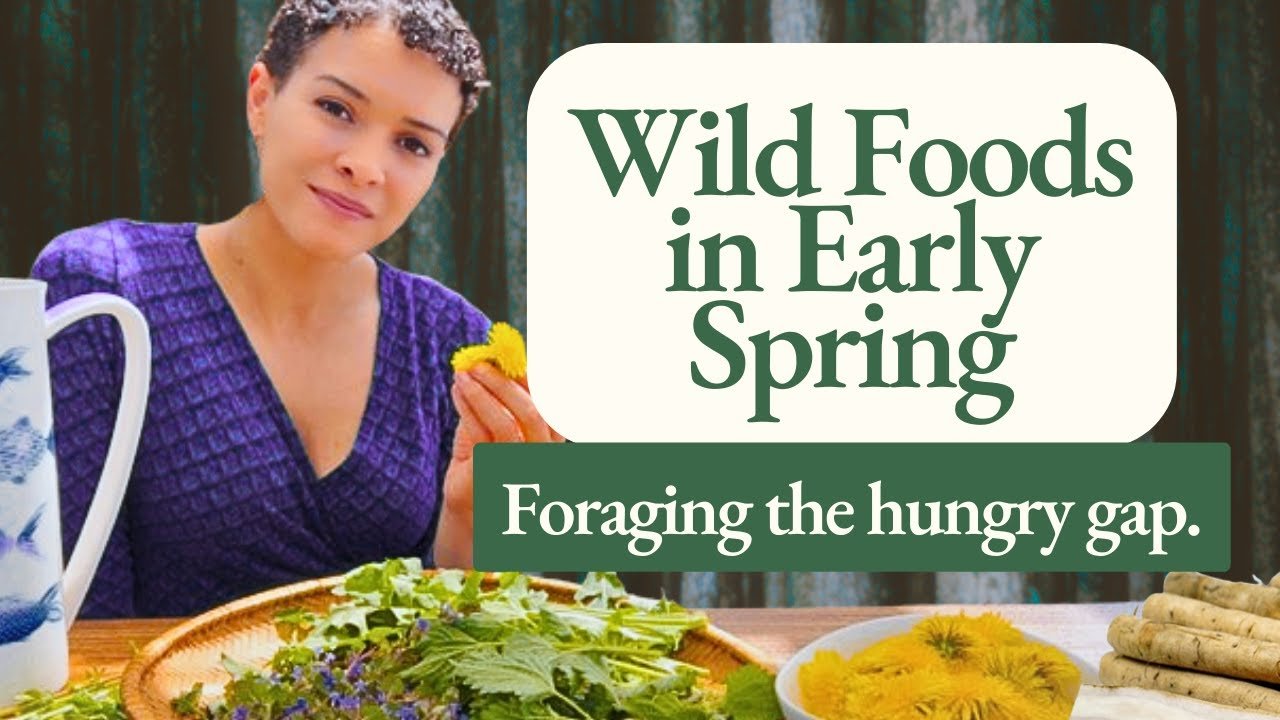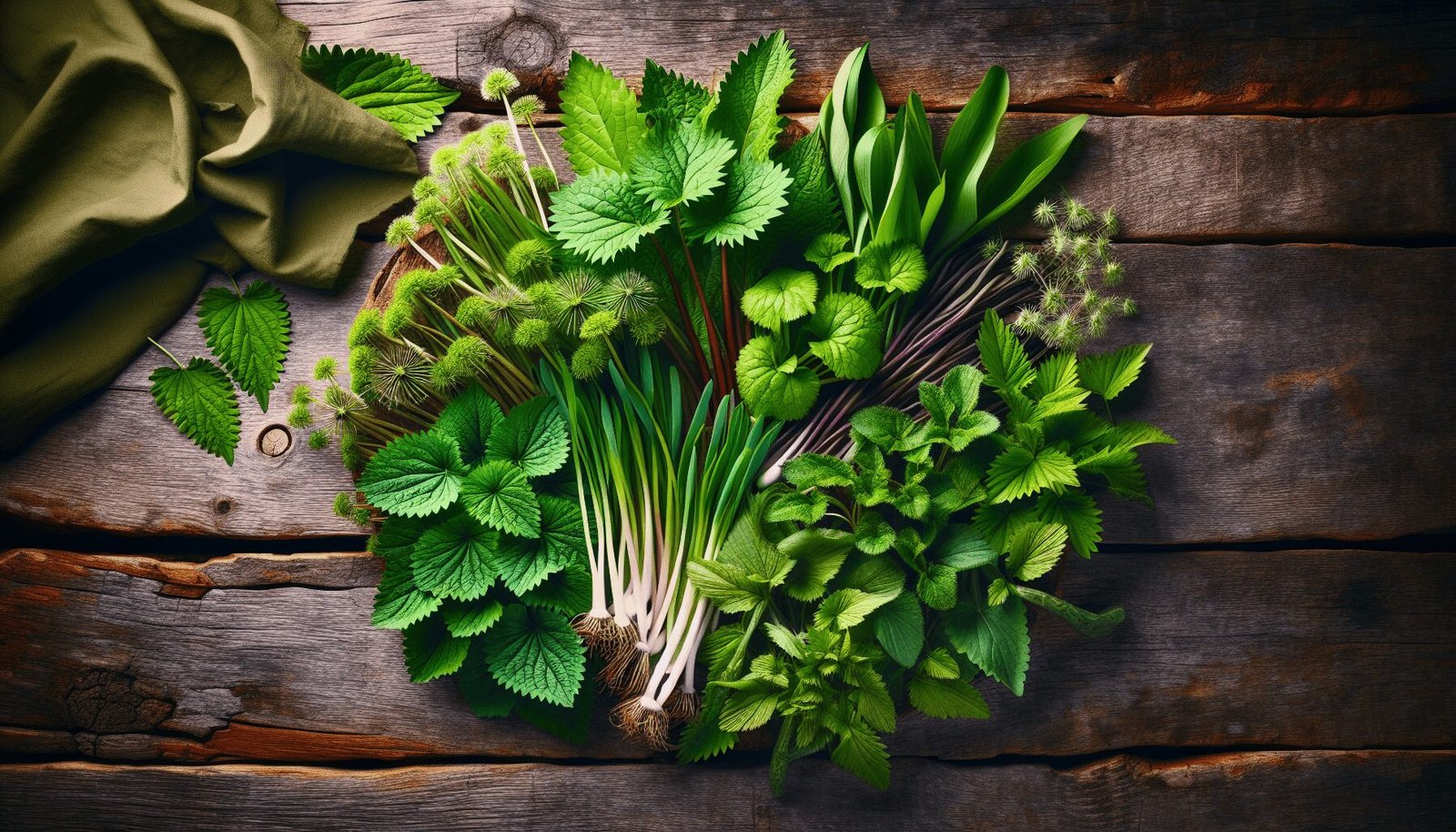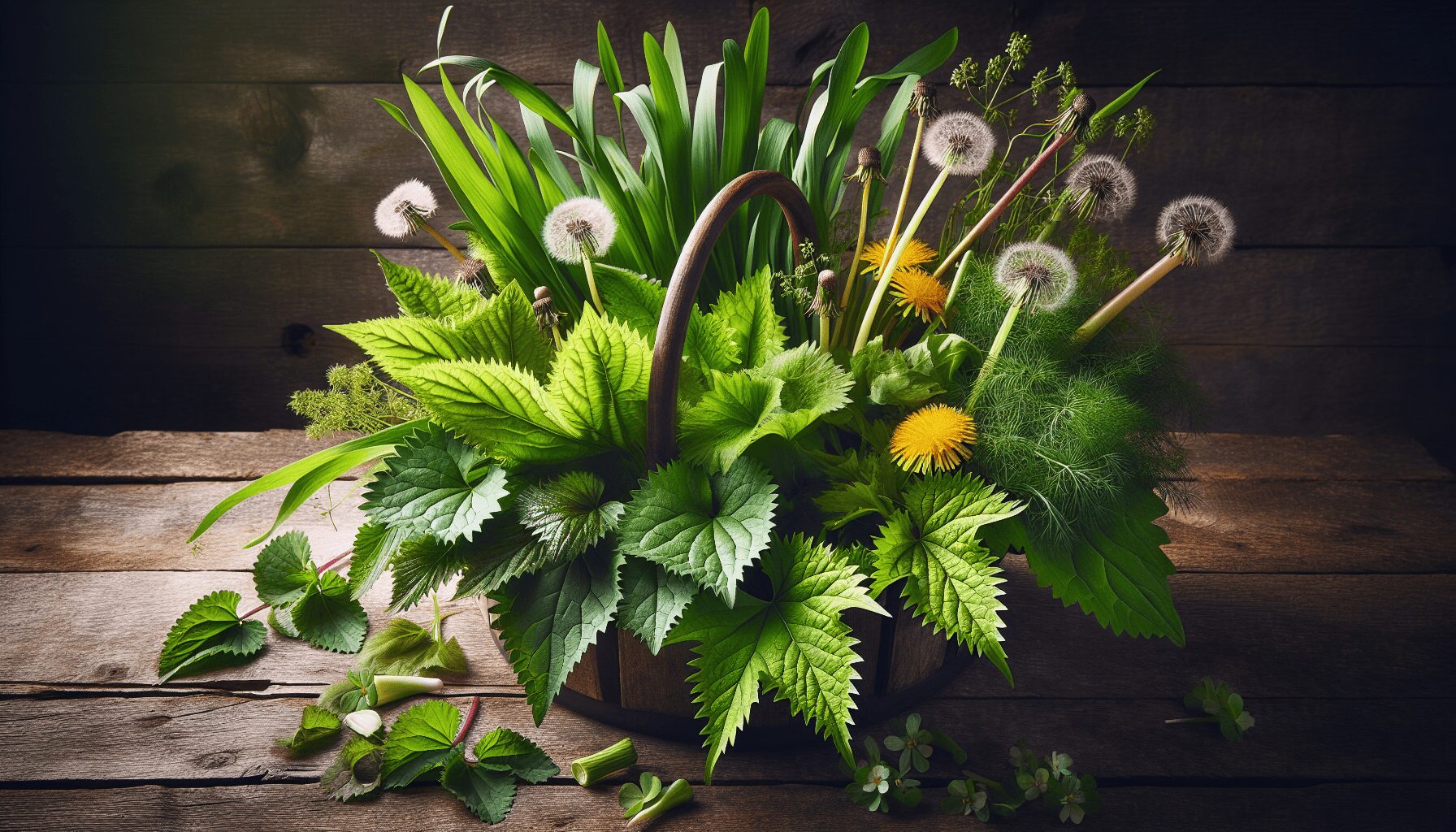In “Wild Edible Plants in Early Spring: Foraging the Hungry Gap,” you’ll discover the bounty of nutritious plants Mother Nature offers during those early months when your garden hasn’t yet started producing. This video explores several frost-hardy, wild edibles that can help bridge the gap, ensuring you have fresh, nutritious options despite the season.
From the familiar dandelion, rich in vitamins and perfect for salads and teas, to the nutrient-dense stinging nettle, which can be used to combat allergies, you’ll get to know a variety of valuable plants. Ethical foraging practices are also emphasized, along with community engagement, encouraging you to share your own favorite finds and tips with others.

This image is property of i.ytimg.com.
Understanding the Hungry Gap
Defining the Hungry Gap
Welcome to the enlightening world of foraging! Let’s dive right in and talk about the “Hungry Gap”. This term might be new to you, but it’s a crucial concept to understand, especially for homesteaders and gardeners. The Hungry Gap refers to a challenging period, typically spanning from late winter to early summer, where fresh garden vegetables are scarce. Stored produce from the previous year starts to dwindle, and new crops aren’t yet ready for harvest. It’s a time when you might feel like there’s nothing fresh to eat, but nature has a solution with wild edible plants that thrive in early spring!
Impact on Availability of Fresh Produce
During the Hungry Gap, getting a fresh, nutritious meal from your garden can seem impossible. Potatoes, onions, and squash from your storage start to run low, and those peas and spinach you planted haven’t sprouted enough to eat yet. However, this period isn’t as bleak as it sounds. Many wild edible plants emerge in early spring, offering a bounty of nutrition when you need it most. Learning to identify and harvest these plants helps bridge this gap, ensuring you have access to fresh produce even when your garden isn’t cooperating.
The Role of Wild Edible Plants
Wild edible plants play a fascinating and vital role during the Hungry Gap. These resilient and often overlooked plants can provide the nutrition and variety your diet needs. From nutrient-packed greens like stinging nettle to the versatile dandelion, these plants are nature’s way of helping us get through those lean months. Embracing wild edibles can boost your health, diversify your diet, and deepen your connection to the natural world.
Essential Tools and Gear for Foraging
Recommended Foraging Tools
Embarking on foraging adventures requires some basic tools that ensure both efficiency and safety. A good pair of gloves is essential for handling prickly or stinging plants. A small digging tool can help you extract roots without damaging them, while a basket or cloth bag helps carry your finds without squashing them. A knife or a pair of scissors is handy for harvesting plants with tough stems, and a field guide or foraging app is invaluable for identifying and learning about the plants you come across.
Safety Gear Essentials
Foraging can be a lot of fun, but safety should always be a priority. Dress appropriately with sturdy shoes, long pants, and sleeves to protect against thorns, ticks, and other hazards. Carry a first aid kit just in case of minor injuries. If foraging for stinging plants like nettles, ensure you have gloves and long sleeves. A hat and sunscreen are also good ideas to protect against sunburn. Lastly, always let someone know where you are going and when you expect to be back.
Sustainable Harvesting Practices
Sustainable foraging is all about respecting nature and ensuring that plants continue to thrive for future harvests. Follow the “1-in-20 rule” – only take one out of every twenty plants you find, and avoid stripping all the leaves or flowers from any single plant. Harvest responsibly by cutting above the root system to allow regrowth, and never take more than you need. Remember, we share these wild resources with wildlife and fellow foragers.
Burdock: The Detoxifying Root
Identifying Burdock
Burdock is one of those plants that’s hard to miss once you know what you’re looking for. You’ll recognize it by its large, wavy, dark green leaves with a whitish underside. In its second year, the plant will produce tall, long-stemmed flowers with spiky burrs – which can be quite a nuisance when they stick to your clothes or pet’s fur!
Nutritional Benefits
Burdock root is not just any root; it’s a powerful detoxifier. It contains inulin, a prebiotic fiber that supports gut health, along with antioxidants, vitamins, and minerals. It’s prized in many cultures for its ability to purify the blood, support the liver, and promote healthy skin. Burdock also offers a good source of potassium, calcium, and magnesium, making it a beneficial addition to your diet.
Culinary Uses
Burdock root can be a delightful culinary ingredient! It’s often used in soups, stir-fries, and teas. In Japanese cuisine, it’s known as “gobo” and is commonly shredded and sautéed with carrots and soy sauce for a dish called kinpira gobo, which has a sweet and savory flavor. You can also roast burdock root like other root vegetables, or include it in broths for a nutrient boost.
Dandelion: A Nutritious Marvel
Identifying Dandelion
Dandelions are incredibly easy to identify with their bright yellow flowers and jagged-edged leaves forming a rosette at the base. The leaves are hairless, and when broken, the stems exude a milky sap. These plants are wonderfully adaptable, popping up in lawns, gardens, and cracks in the pavement all over.
Part of the Plant to Use
One of Dandelion’s greatest attributes is that the entire plant is edible. Harvest the young, tender leaves early in the season before they become too bitter. The yellow flowers can be used in fritters or salads, and the roots can be dug up, cleaned, and roasted, or boiled.
Health Benefits and Uses
Dandelions are a powerhouse of nutrition. The leaves are rich in vitamins A, C, K, and multiple B vitamins, as well as minerals like iron, calcium, magnesium, and potassium. The roots have traditionally been used in herbal medicine for their liver-detoxifying properties. Additionally, drinking dandelion tea can aid digestion and boost your immune system. Dandelion leaves make a tasty addition to salads and smoothies, offering a slightly bitter note that pairs well with sweet or tangy dressings.

Creeping Charlie: The Mint Family Member
Recognizing Creeping Charlie
Creeping Charlie, also known as ground ivy, is a robust member of the mint family. You’ll spot it by its round, scalloped leaves and creeping stems that form dense mats allowing it to spread rapidly. The leaves emit a distinct, minty aroma when crushed. In spring, it produces small, blueish-violet flowers that make it easier to identify.
Nutritional Value
Creeping Charlie isn’t just a pesky garden intruder; it’s packed with nutritional benefits! This plant is high in vitamin C, which supports a healthy immune system. It also contains powerful antioxidants that can help combat oxidative stress and inflammation in the body.
Medicinal and Culinary Applications
Traditionally, Creeping Charlie has been used to make teas that help treat congestion and sinus infections. The leaves and flowers can be steeped to create a refreshing, minty tea, and they’re also edible raw, making a great addition to salads and pestos. Creeping Charlie can be an interesting herb to experiment with in your kitchen – try using it to flavor soups, stews, or even refreshing summer drinks.
Stinging Nettle: Nutrient-Packed Powerhouse
Safely Identifying Stinging Nettle
Stinging nettle is a fantastic foraging find, but it comes with a small warning – don’t touch it with bare hands! Nettle is easily identified by its serrated, pointed leaves and tiny stinging hairs on the stems and underside of the leaves. The plant grows in dense clusters, often in moist, nitrogen-rich soils.
Harvesting Techniques
To harvest stinging nettle safely, wear gloves and long sleeves to avoid the sting. Use scissors to cut the young, tender tops of the plants, which are the best part to eat. Once harvested, you can neutralize the sting by blanching the leaves in boiling water for a minute or two, or by drying or cooking them.
Health Benefits and Preparation
Stinging nettle is a nutritional powerhouse. It’s high in vitamins A, C, D, and K, and loaded with calcium, iron, and protein. Nettle has been used to reduce inflammation, support urinary health, and boost the immune system. You can use it in a variety of culinary applications, from making a nourishing soup to a delicious pesto. The tender young leaves can be sautéed like spinach, blended into smoothies, or dried for tea.

Chickweed: The Star Among Weeds
Identifying Chickweed
Chickweed is a common garden weed that many tend to overlook, but it’s a gem in disguise. It has small, star-shaped white flowers and bright green, oval leaves that grow opposite each other on the stem. This plant prefers cooler weather and often carpets the ground in early spring.
Nutritional Information
Chickweed is a nutritional dynamo. It’s an excellent source of vitamins A and C, both crucial for skin and immune health. Additionally, it’s rich in important minerals like iron, phosphorus, and magnesium. Chickweed is also known for its cooling and anti-inflammatory properties.
Culinary Uses, Including Pesto
Chickweed is tender and mild, making it a fantastic addition to your meals. You can toss it into salads for a nutrient boost or blend it into a vibrant green pesto with garlic, nuts, and olive oil. This pesto makes a delicious spread for sandwiches or a topping for pasta dishes.
Chives: Early Perennial Flavor
Recognizing Chives
Chives are one of the earliest perennials to emerge in the garden. They have slender, hollow, grass-like leaves and produce beautiful purple flowers in the spring. If you’re ever unsure, just give the leaves a gentle rub – the unmistakable onion scent will confirm their identity.
Nutrient Profile
These small but mighty plants are packed with nutrition. Chives are a great source of vitamins A and C, both essential for maintaining good vision and a strong immune system. They also contain useful amounts of calcium, magnesium, and potassium, supporting overall health and wellness.
Culinary Applications
Chives add a delightful, mild onion flavor to a variety of dishes. Snip them fresh into salads, sprinkle them over soups, or use them to garnish scrambled eggs. Their delicate flavor pairs wonderfully with dairy, so try mixing them into cream cheese or sour cream for an easy, flavorful dip.
Yarrow: The Healing Herb
Identifying Yarrow
Yarrow is a distinctive plant, easy to identify by its feathery, fern-like leaves and clusters of small white flowers. The leaves are soft and finely divided, and the plant emits a strong, herbal scent when crushed. It often grows in open fields and along roadsides.
Health Benefits and Uses
This plant is revered for its medicinal properties. Yarrow has been used for centuries to stop bleeding, reduce inflammation, and relieve pain. It’s also known for its ability to support the digestive system and alleviate cold symptoms. The leaves and flowers can be used to make a soothing tea, or applied as a poultice to wounds.
Preparing Yarrow Tea
To make a calming yarrow tea, simply steep dried yarrow leaves and flowers in boiling water for about 10 minutes. This infusion can help with digestion, reduce fever, and provide a dose of essential vitamins and minerals. Drink it warm for the best effect, and sweeten it with a little honey if desired.
Conclusion
Summary of Key Points
We’ve journeyed through the world of wild edibles, highlighting key plants that can help you bridge the Hungry Gap. From the detoxifying properties of burdock root to the versatile and nutritious dandelion, each plant offers unique benefits to broaden your culinary and medicinal horizons.
Emphasizing the Value of Wild Edibles
Wild edible plants are not only a lifeline during the Hungry Gap but also a rich source of untapped nutrition and medicinal benefits. They reconnect us with nature and remind us of the abundance that exists in our surroundings, even when our cultivated gardens aren’t producing.
Encouragement to Forage Responsibly
As you venture out to forage, always remember the importance of sustainable and ethical harvesting practices. Respect nature, ensure the plants’ future growth, and share your experiences with your community. Happy foraging, and may your wild edible adventures be bountiful and enriching!